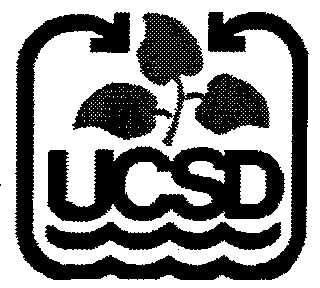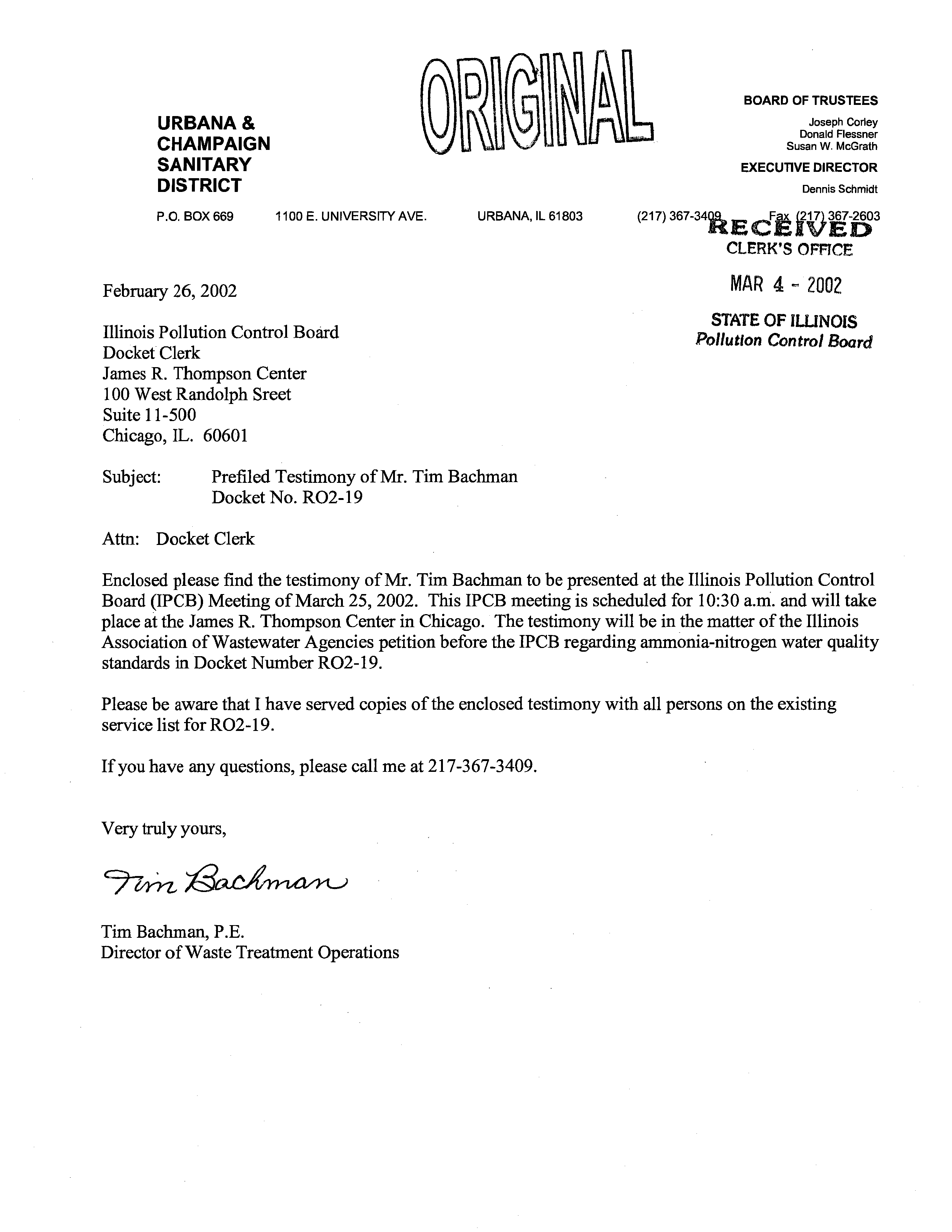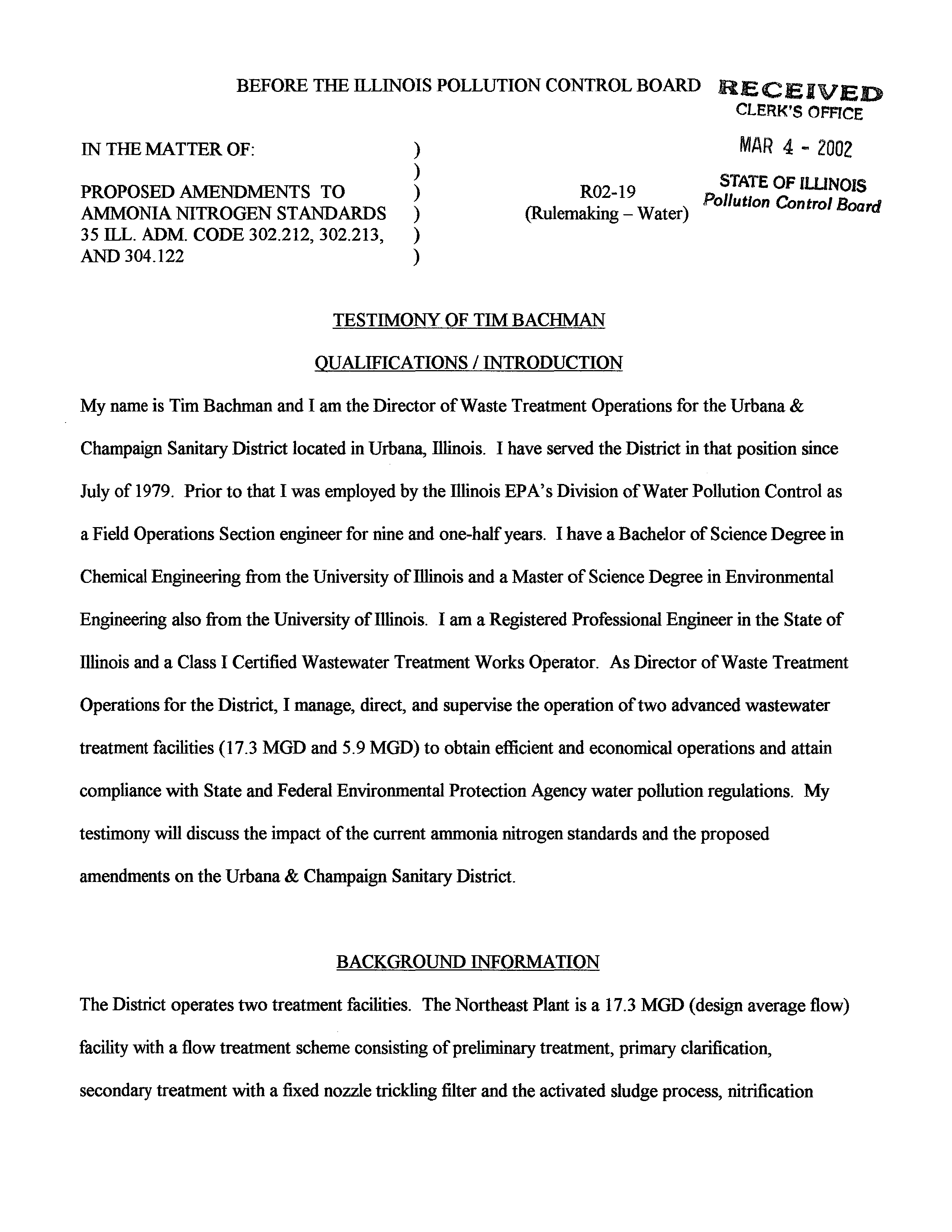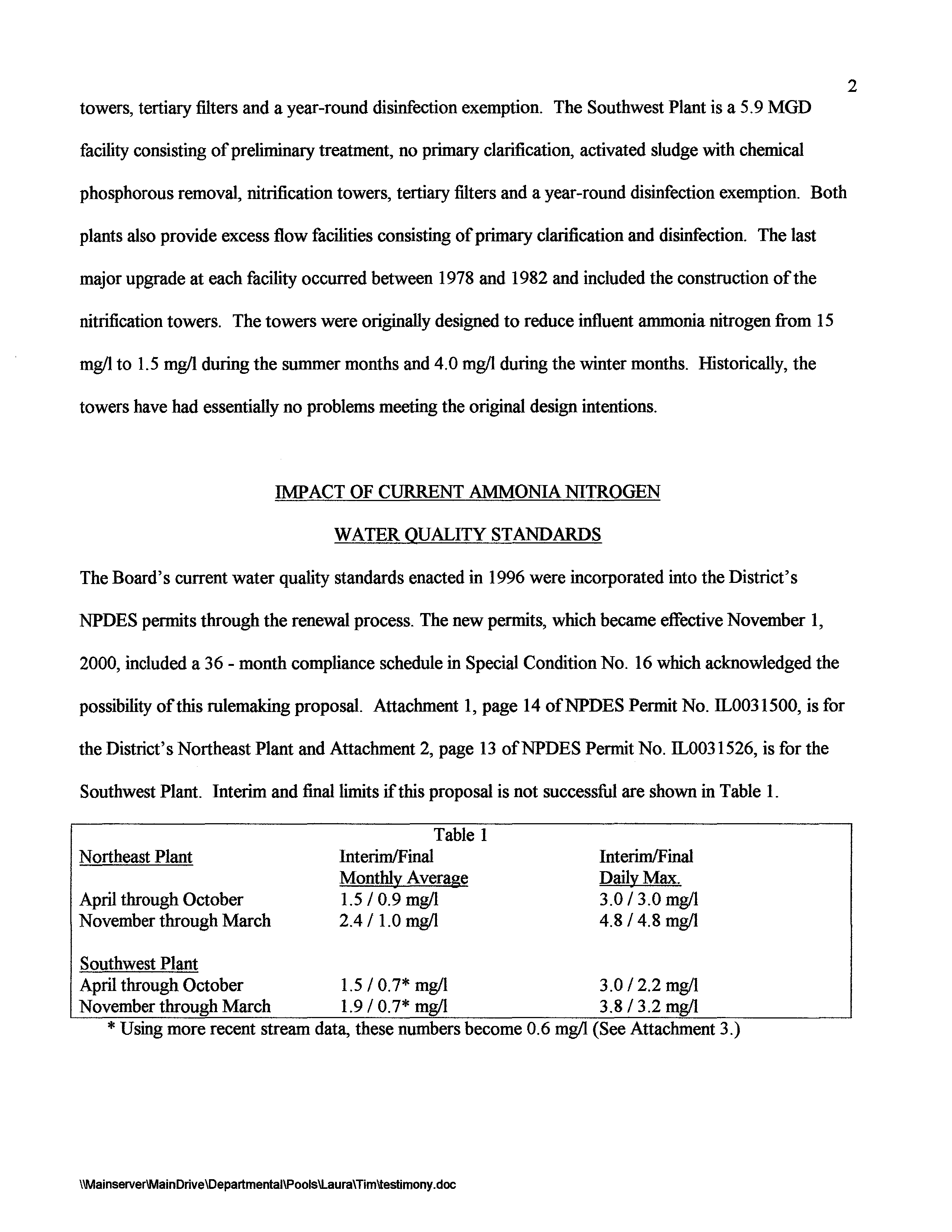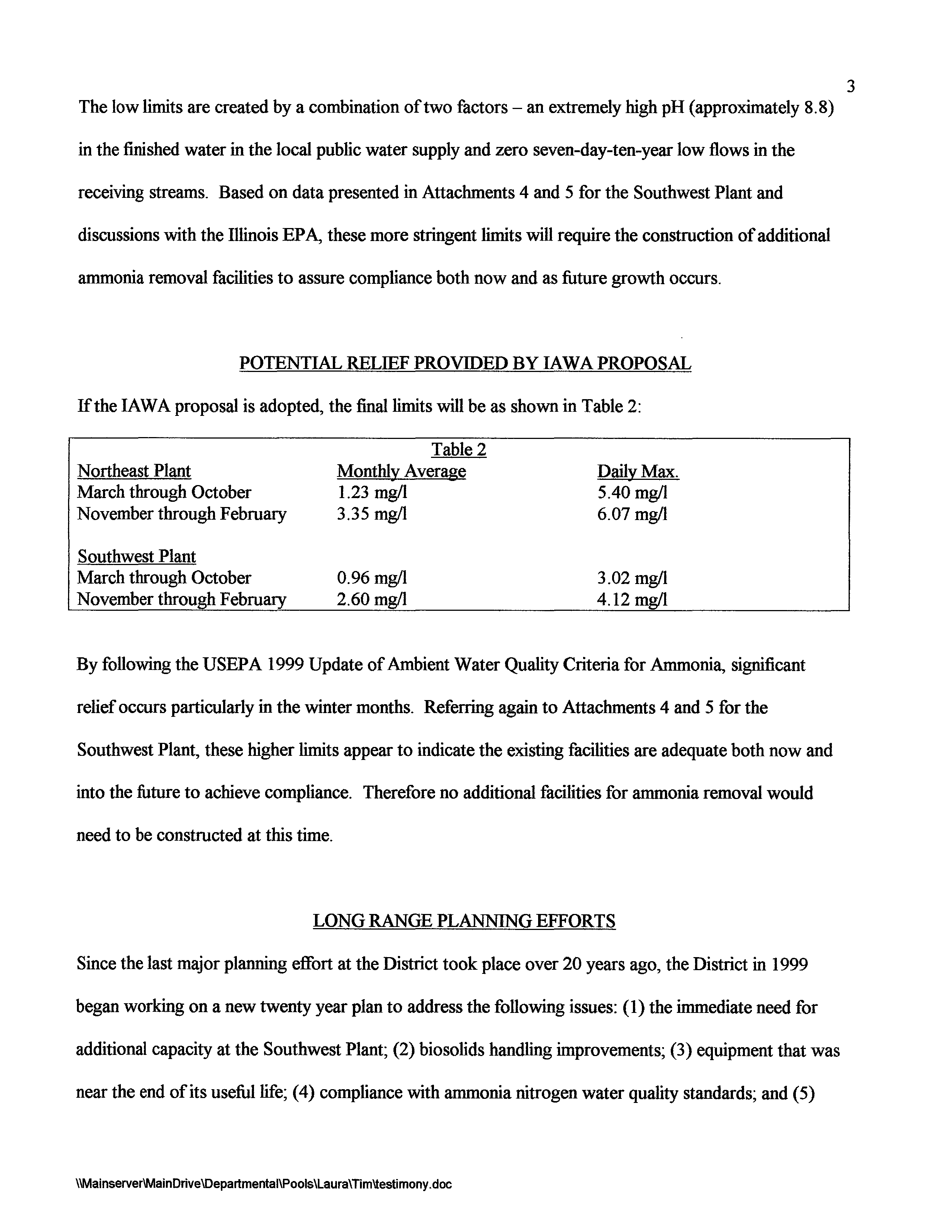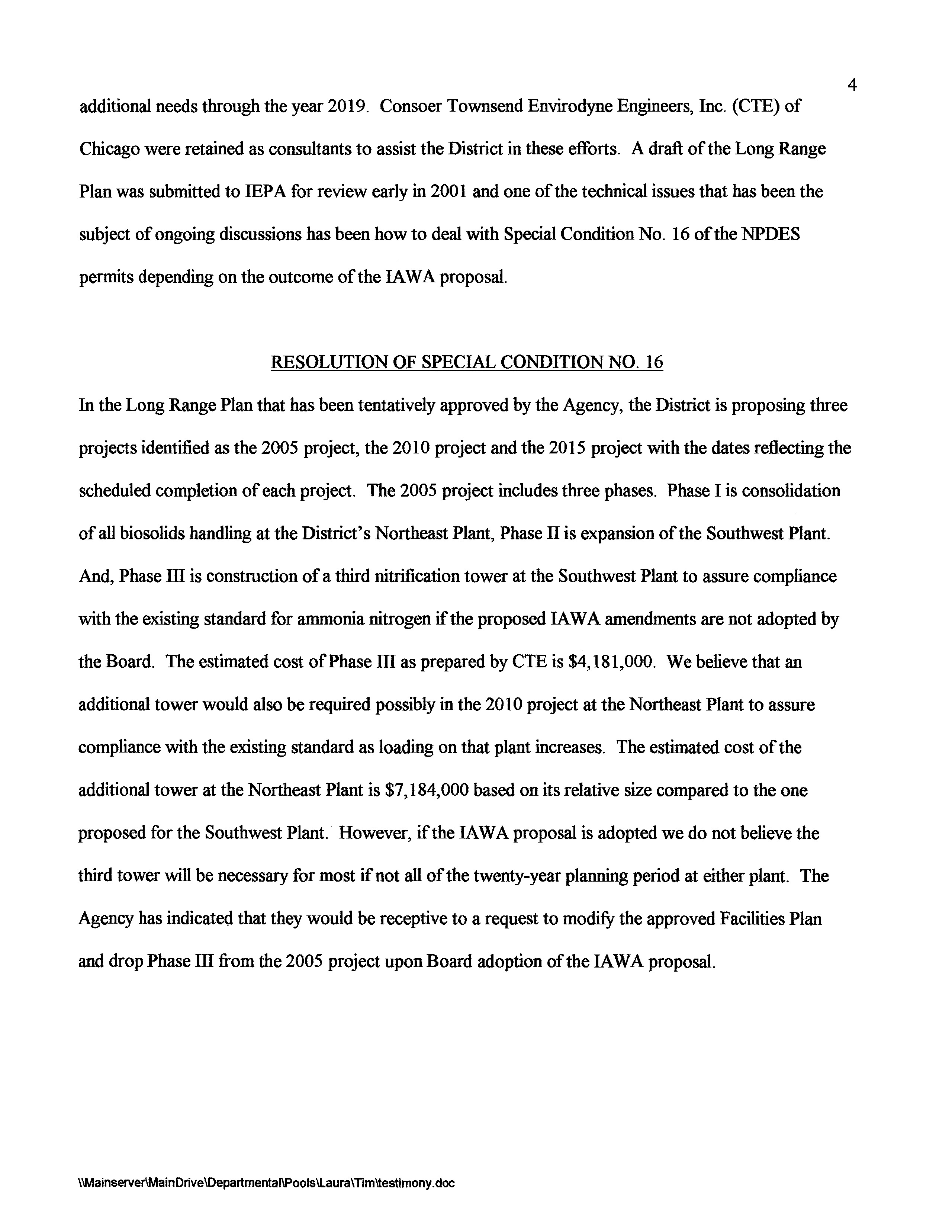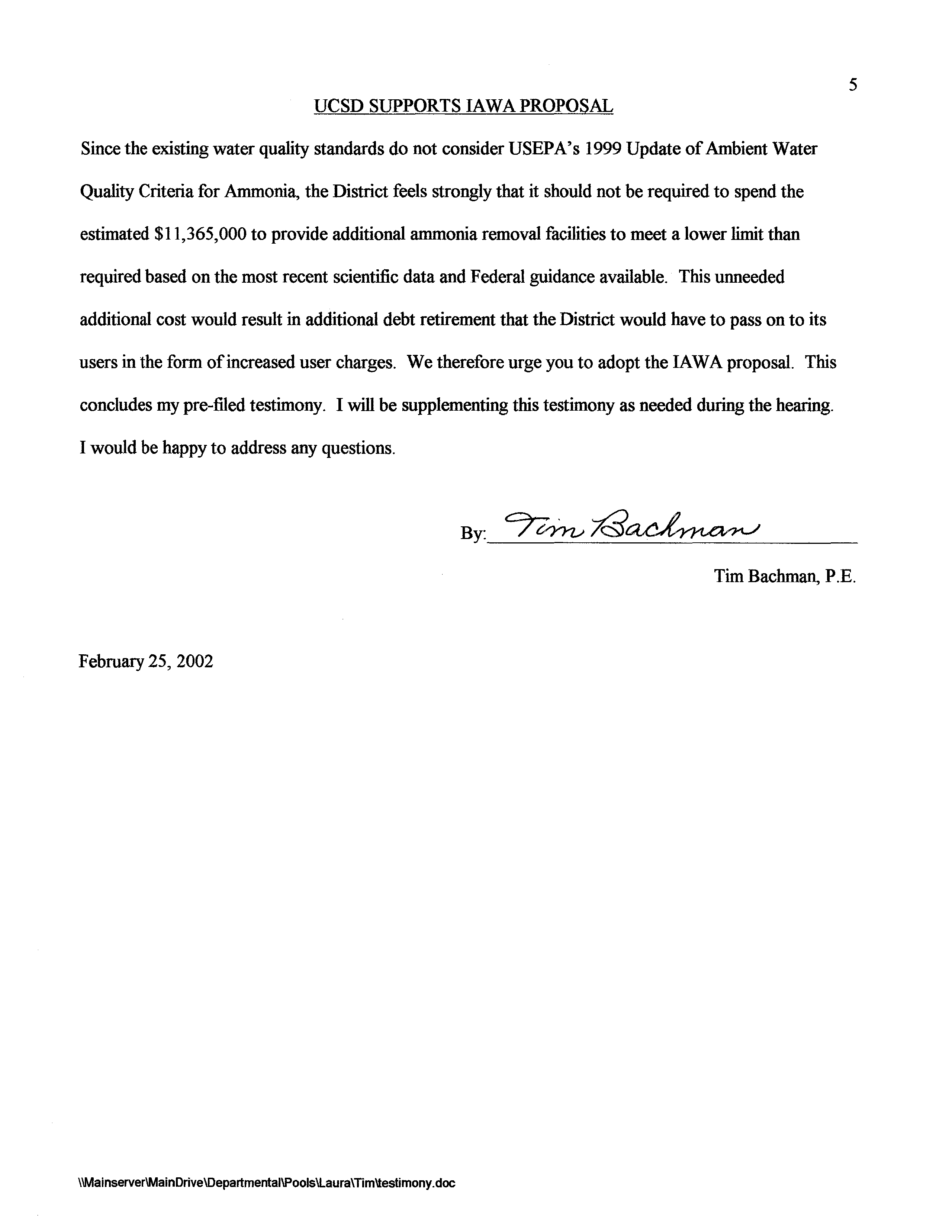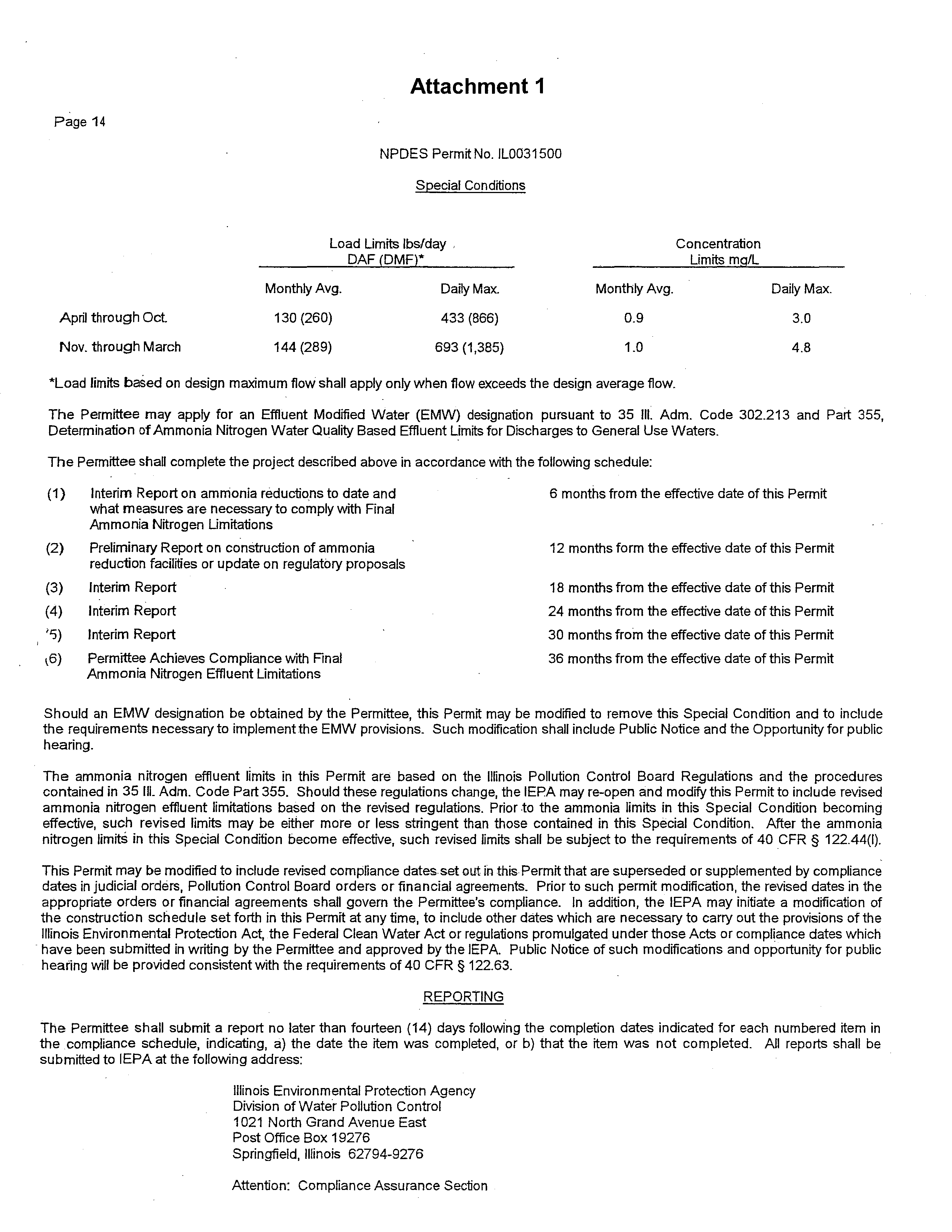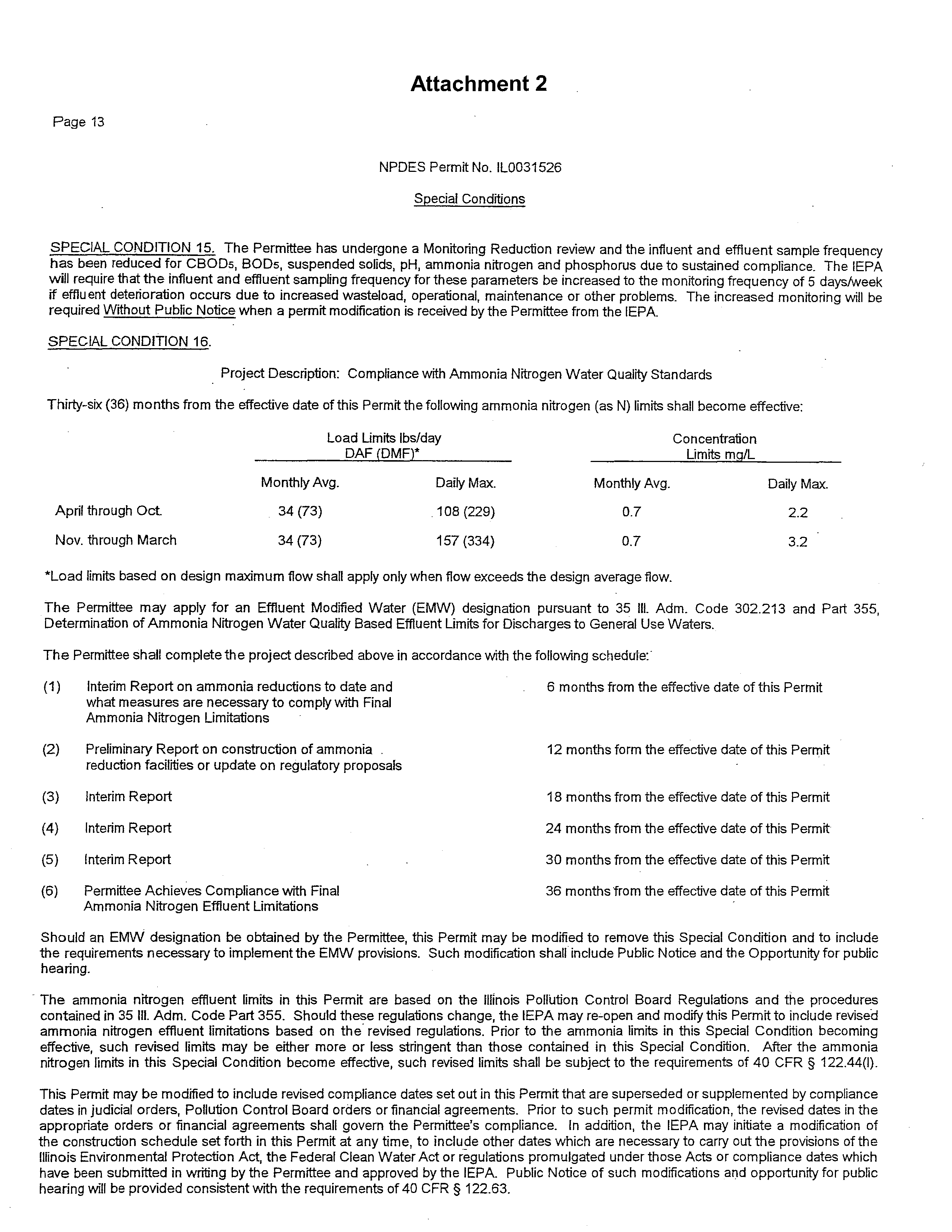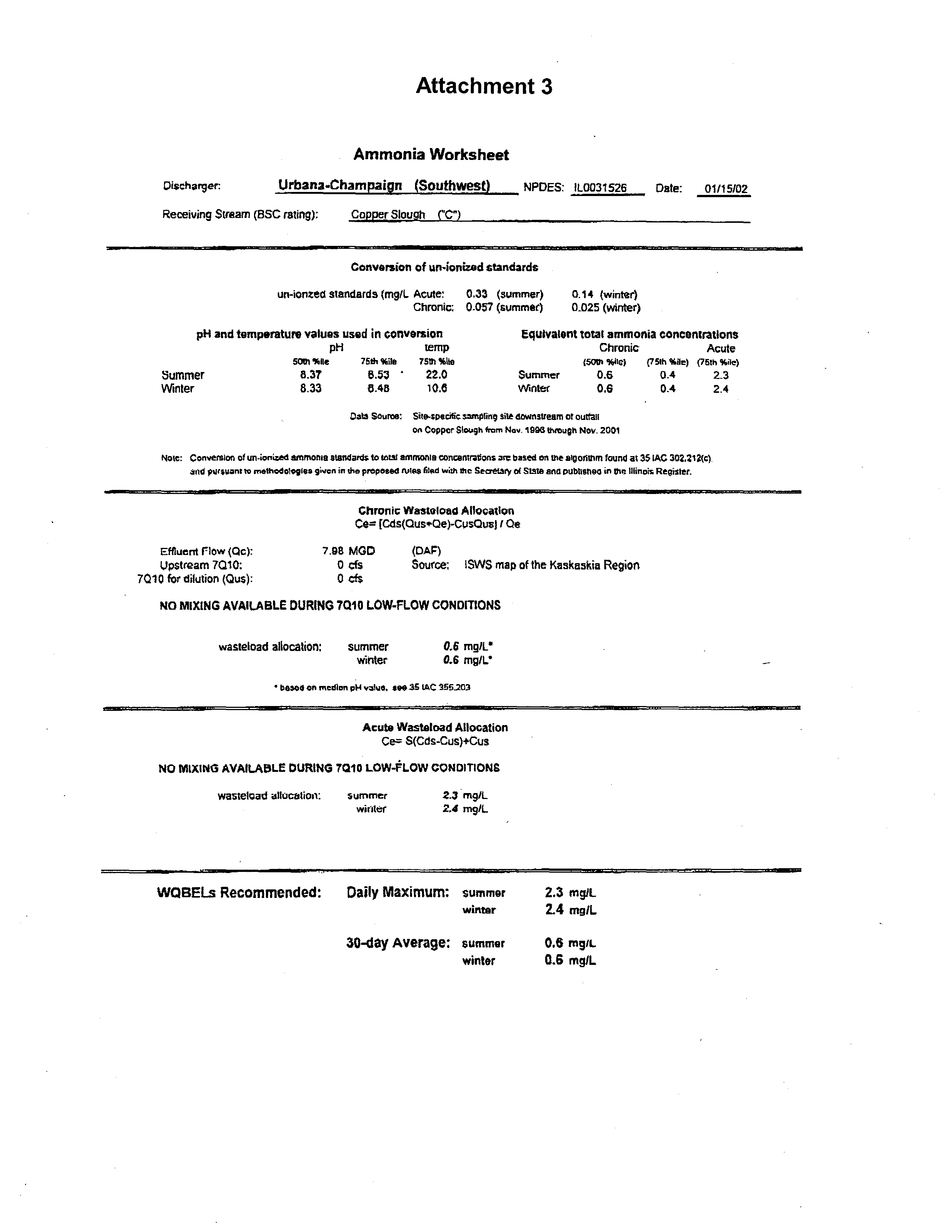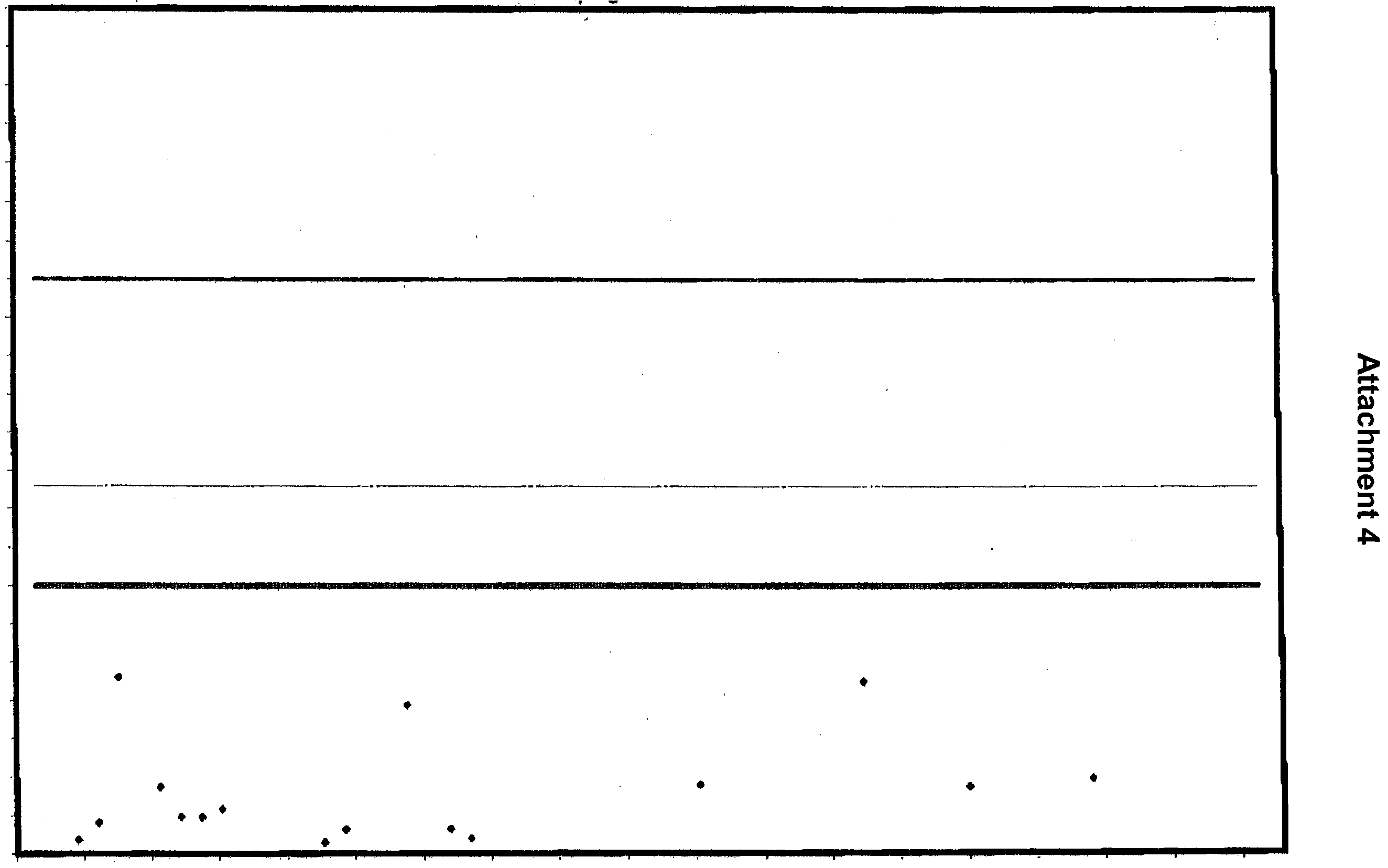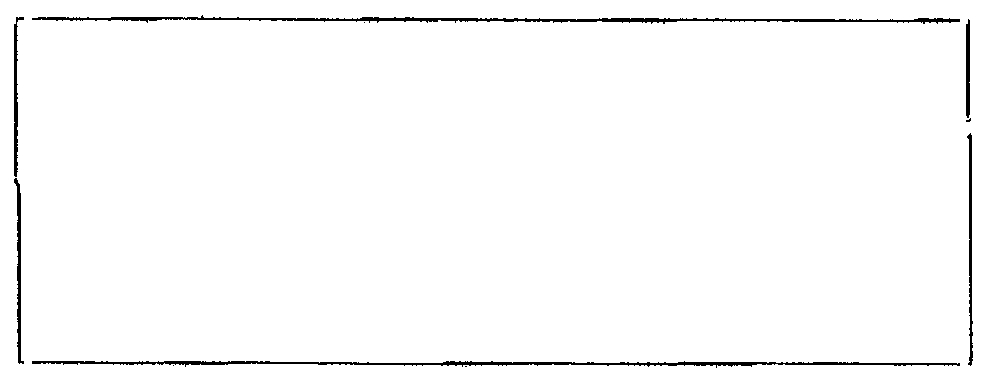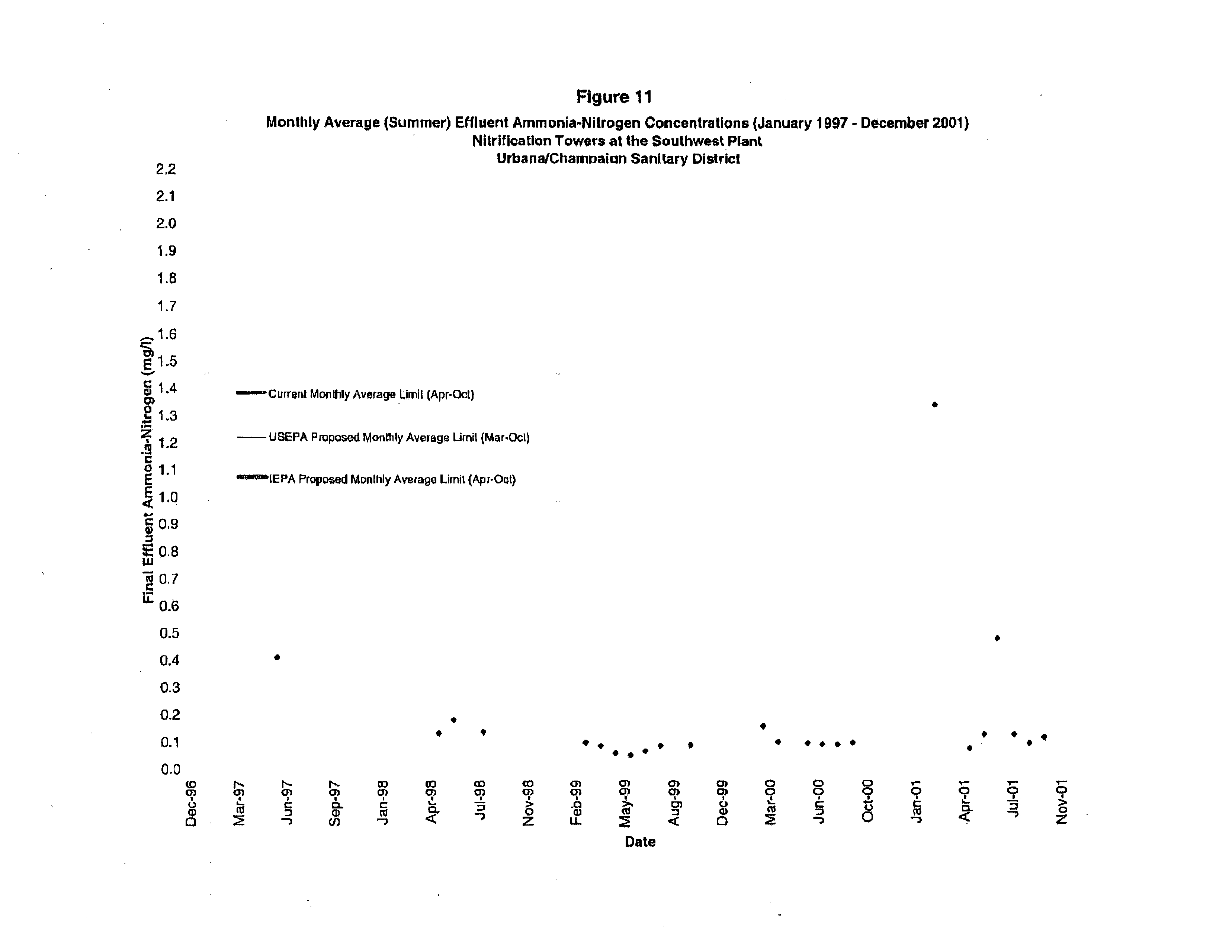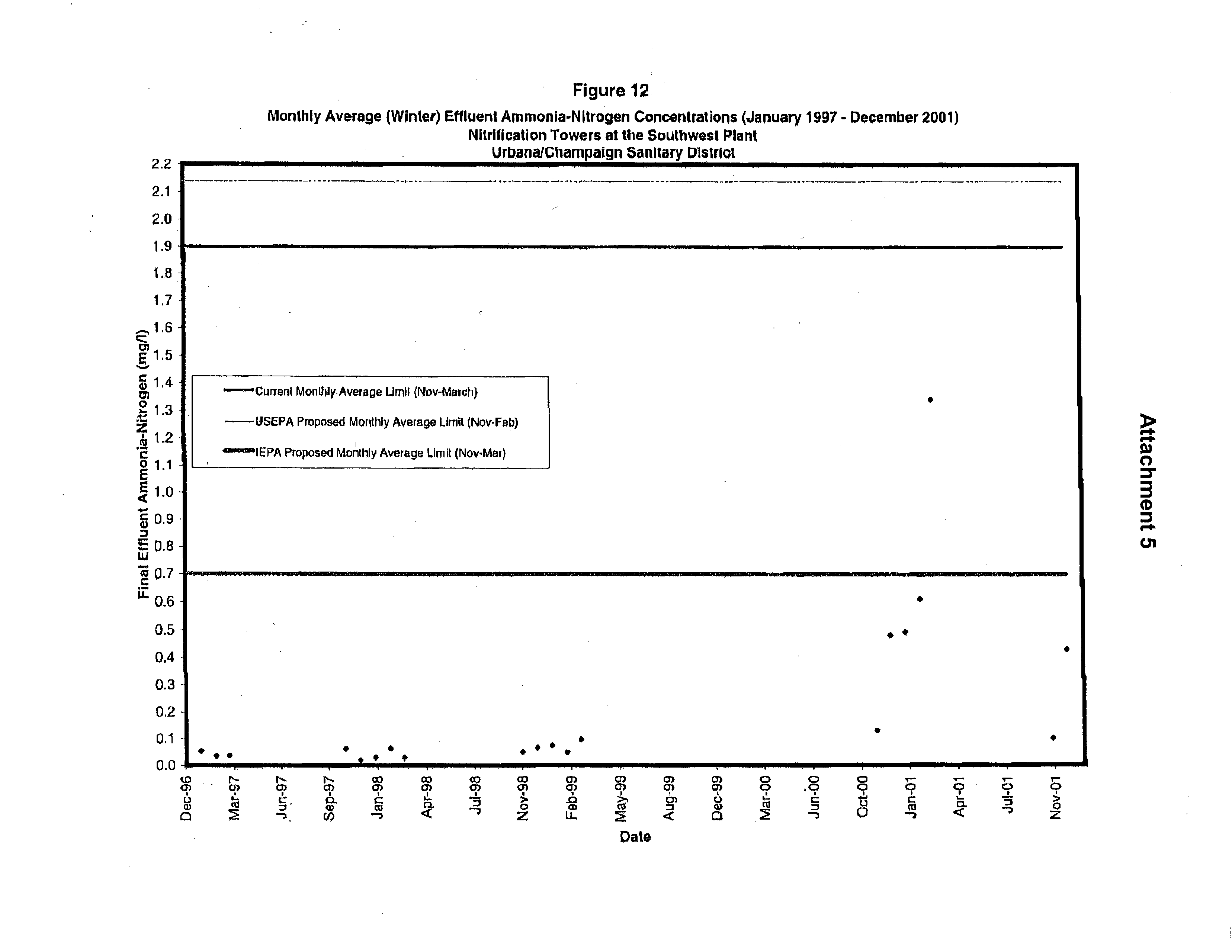URBANA &
CHAMPAIGN
SANITARY
DISTRICT
P.O. BOX 669
February 26, 2002
Illinois Pollution Control Board
Docket Clerk
James R. Thompson Center
100 West Randolph Sreet
Suite 11-500
Chicago, IL. 60601
Subject:
BOARD OF TRUSTEES
Joseph Corley
Donald Flessner
Susan W. McGrath
EXECUTIVE DIRECTOR
Dennis Schmidt
(217) 367~34~
CLERK’SCF
E 2~36726
OFFICE
O3
M~R4
2002
STATE OF IWNOIS
Pollution Control Board
Attn: Docket Clerk
Enclosed please find the testimony ofMr. Tim Bachman to be presented at the Illinois Pollution Control
Board (IPCB) Meeting ofMarch
25,
2002. This IPCB meeting is scheduled for 10:30 a.rn. and will take
place at the James R. Thompson Center in Chicago. The testimony will be in the matter ofthe Illinois
Association ofWastewater Agencies petition before the IPCB regarding ammonia-nitrogen water quality
standards in Docket Number R02-19.
Please be aware that I have served copies ofthe enclosed testimony with all persons on the existing
service list forR02-l9.
Ifyou have any questions, please call me at 217-367-3409.
Very truly yours,
Tim Bachman, P.E.
Director ofWaste Treatment Operations
1100 E. UNIVERSITY AVE.
URBANA, IL 61803
Prefiled Testimony ofMr. Tim Bachman
Docket No. R02-19
BEFORE THE ILLINOIS POLLUTION
CONTROL BOARD
~
CLERK’S
E CE I
OFFICE
YE D
INTHEMATTEROF:
)
MI~R4 2002
PROPOSED
AMENDMENTS
TO
)
R02-19
~
OIS
AMMONIANITROGEN STANDARDS
)
(Rulemaking
-
Water)
~ utlon Control Board
35 ILL. ADM. CODE 302.212, 302.213,
)
AND 304 122
)
TESTIMONY
OF
TIM
BACHMAN
QUALIFICATIONS / INTRODUCTION
My name is Tim Bachman and I am the Director ofWaste Treatment Operations for the Urbana &
Champaign Sanitary District located
in
Urbana, Illinois. I have served the District in that position since
July of 1979. Prior to that I was employed by the Illinois EPA’s Division ofWater Pollution Control as
a Field Operations Section engineer for nine and one-halfyears. Ihave a Bachelor ofScience Degree in
Chemical Engineering from the University ofillinois and a Master of Science Degree in Environmental
Engineering also from the University ofIllinois. I am a Registered Professional Engineer in the State of
illinois and a Class I Certified Wastewater Treatment Works Operator. As Director ofWaste Treatment
Operations for the District, I manage, direct, and supervise the operation oftwo advanced wastewater
treatment facilities (17.3
MGD and
5.9 MGD) to obtain efficient and economical operations and attain
compliance with
State
and Federal Environmental Protection Agency water pollution regulations. My
testimony will discuss the impact ofthe current ammonia nitrogen standards and the proposed
amendments on the Urbana & Champaign SanitaryDistrict.
BACKGROUND INFORMATION
The District operates two treatment facilities. The Northeast Plant is a 17.3 MGD (design average flow)
facility with a flow treatment scheme consisting ofpreliminarytreatment, primary clarification,
secondaiy treatment with a fixed nozzle trickling ifiter and the activated sludge process, nitrification
2
towers, tertiary filters and a year-round disinfection exemption. The Southwest Plant is a 5.9 MGD
facility consisting ofpreliminary treatment, no primaryclarification, activated sludge with chemical
phosphorous removal, nitrification towers, tertiary ifiters and a year-round disinfection exemption. Both
plants also provide excess flowfacilities consisting ofprimary clarification and disinfection. The last
majorupgrade at each facility occurred between 1978 and 1982 and included the construction ofthe
nitrification towers. The towers were originally designed to reduce influent ammonia nitrogen from 15
mg/i to
1.5
mg/I during the summer months and 4.0 mg/l during the winter months. Historically, the
towers have had essentially no problems meeting the original design intentions.
IMPACT OF CURRENT
AMMONIA
NITROGEN
WATER QUALITY STANDARDS
The Board’s current water quality standards enacted in 1996 were incorporated into the District’s
NPDES permits through the renewal process. The new permits, which became effective November 1,
2000, included a 36
-
month compliance schedule in Special Condition No. 16 which acknowledged the
possibility ofthis rulemaking proposal. Attachment 1, page 14 ofNPDES Permit No. 1L003
1500,
is for
the District’s Northeast Plant and Attachment 2, page 13 ofNPDES Permit No. 1L003 1526, is for the
Southwest Plant. Interim and final limits ifthis proposal is not successful are shown in Table 1.
*
Using more recent stream data, these numbers become 0.6 mg/I (See Attachment 3.)
Table 1
Northeast Plant
Interim/Final
Interim/Final
Monthly Average
Daily Max.
April through October
1.5 / 0.9 mg/l
3.0 / 3.0 mg/I
November through March
2.4 / 1.0 mg/l
4.8
I
4.8 mg/I
Southwest Plant
April through October
1.5 / Ø~7*mg/i
3.0 / 2.2 mg/l
November through March
1.9 / 0.7* mg/i
3.8 / 3.2 mg/i
\\Mainserver\MainDrive\Departmental\Pools\Laura\Tim\testimony.doc
3
The low limits are created by a combination oftwo factors
—
an extremely high pH (approximately 8.8)
in the finished water in the local public water supply and zero seven-day-ten-year low flows in the
receiving streams. Based on data presented in Attachments 4 and
5
for the Southwest Plant and
discussions with the Illinois EPA, these more stringent limits will require the construction ofadditional
ammonia removal facilities to assure compliance both now and as future growth occurs.
POTENTIAL RELIEF PROViDED BY IAWA PROPOSAL
Ifthe JAWA proposal is adopted, the final limits will be as shown in Table 2:
By following the USEPA 1999 Update of Ambient Water Quality Criteria forAmmonia, significant
relief occurs particularly in the winter months. Referring again to Attachments 4 and
5
forthe
Southwest Plant, these higher limits appearto indicate the existing facilities are adequate both now and
into the future to achieve compliance. Therefore no additional facilities for ammonia removal would
need to be constructed at this time.
LONG RANGE PLANNING EFFORTS
Since the last major planning effort at the District took place over 20 years ago, the District in 1999
began working on a new twenty year plan to address the following issues: (1) the immediate need for
additional capacity at the Southwest Plant; (2) biosolids handling improvements; (3) equipment that was
near the end ofits useful life; (4) compliance with ammonia nitrogenwater quality standards; and
(5)
Table 2
Northeast Plant
Monthly Average
Daily Max.
March through October
1.23 mg/I
5.40 mg/I
November through February
3.35 mg/I
6.07 mg/i
Southwest Plant
March through October
0.96 mg/l
3.02 mg/I
November through February
2.60 mg/i
4.12 mg/i
\\Mainserver\MainDrive\DepartmentaI\PooIs\Laura\Tim’~testimony.doc
4
additional needs through the year 2019. Consoer Townsend Envirodyne Engineers, Inc. (CTE) of
Chicago were retained as consultants to assist the District in these efforts. A draft ofthe Long Range
Plan was submitted to IEPA for review early in 2001 and one ofthe technical issues that has been the
subject ofongoing discussions has been howto deal with Special Condition No. 16 ofthe NPDES
permits depending on the outcome ofthe IAWA proposal.
RESOLUTION OF SPECIAL CONDITION NO.16
Inthe Long Range Plan that has been tentatively approved by the Agency, the District is proposing three
projects identified as the 2005 project, the 2010 project and the 2015 project with the dates reflecting the
scheduled completion ofeach project. The 2005 project includes three phases. Phase I is consolidation
ofall biosolids handling at the District’s Northeast Plant, Phase II is expansion ofthe Southwest Plant.
And, Phase ifi is construction ofa third nitrification tower at the Southwest Plant to assure compliance
with the existing standard for ammonia nitrogen ifthe proposed IAWA amendments are not adopted by
the Board. The estimated cost ofPhase ifi as prepared by CTE is $4,181,000. We believe that an
additional tower would also be required possibly in the 2010 project at the Northeast Plant to assure
compliance with the existing standard as loading on that plant increases. The estimated cost ofthe
additional tower at the Northeast Plant is $7,184,000 based on its relative size compared to the one
proposed for the Southwest Plant. However, ifthe JAWA proposal is adopted we do not believe the
third tower will be necessary for most ifnot all ofthe twenty-year planning period at either plant. The
Agency has indicated that they would be receptive to a request to modify the approved Facilities Plan
and drop Phase ifi from the 2005 project upon Board adoption ofthe IAWA proposal.
\\Mainserver\MainDrive\DepartmentaI\PooIs~Laura\Tim\testimony.doc
5
UCSD SUPPORTS IAWA PROPOSAL
Since the existing water quality standards do not consider USEPA’s 1999 Update ofAmbient Water
Quality Criteria forAmmonia, the District feels strongly that it should not be requiredto spend the
estimated $11,365,000 to provide additional ammonia removal facilities to meet a lower limit than
requiredbased on the most recent scientific data and Federal guidance available. This unneeded
additional cost would result in additional debt retirement that the District would have to pass on to its
users in the form ofincreased user charges. We therefore urge you to adopt the IAWA proposal. This
concludes my pre-filed testimony. I will be supplementing this testimony as needed during the hearing.
I would be happy to address any questions.
By:__________
Tim Bachman, P.E.
February 25, 2002
\\Mainserver\MainDrive\Departmental\Pools\Laura\Tim\testimony.doc
Attachment I
Page 14
NPDES
Permit No. 1L0031500
Special Conditions
Load Umits
lbsiday
Concentration
DAF (DMF)*
Limits mg/L
Monthly Avg.
Daily Max.
Monthly Avg.
Daily Max.
April through Oct.
130(260)
433 (866)
0.9
3.0
Nov. through March
144(289)
693 (1,385)
1.0
4.8
*Load
limits
based on design maximum flow shall apply only when flow exceeds the design average flow.
The Permittee may apply for an Effluent Modified Water (EMW) designation pursuant to 35 Ill. Adm. Code 302.213 and Part 355,
Determination of Ammonia Nitrogen Water Quality Based Effluent Umits for Discharges to General Use Waters.
The Permittee shall complete the project described above in accordance with the following schedule:
(1)
Interim Report on ammonia reductions to date and
6 months from the effective date of this Permit
what measures are necessary to comply with Final
Ammonia Nitrogen Limitations
(2)
Preliminary Report on construction of ammonia
12 months form the effective date of this Permit
reduction facilities or update on regulatory proposals
(3)
Interim Report
18 months from the effective date of this Permit
(4)
Interim Report
24 months from the effective date ofthis Permit
‘5)
Interim Report
30 months from the effective date of this Permit
~6)
Permittee Achieves Compliance with Final
36 months from the effective date of this Permit
Ammonia Nitrogen Effluent Limitations
Should an EMW designation be obtained by the Permittee, this Permit may be modified to remove this Special Condition and to include
the requirements necessary to implementihe EMW provisions. Such modification shall include PubHc Notice and the Opportunity for public
hearing.
The ammonia nitrogen effluent limits in this Permit are based on the Illinois Pollution Control Board Regulations and the procedures
contained in 35 IlL Adm. Code Part 355. Should these regulations change, the IEPA may re-open and modify this Permitto include revised
ammonia nitrogen effluent limitations based on the revised regulations. Prior -to the ammonia limits in this Special Condition becoming
effective, such revised limits may be either more or less stringent than those contained in this Special Condition. After the ammonia
nitrogen limits in this Special Condition become effective, such revised limits shall be subject to the requirements of 40 CFR
§
122.44(l).
This Permit may be modified to include revised compliance dates-set out in this-Permit that are superseded or supplemented by compliance
dates in judicial orders, Pollution Control Board orders or financial agreements. Prior to such permit modification, the revised dates in the
appropriate orders or financial agreements shall govern the Permittee’s compliance. In addition, the IEPA may initiate a modification of
the construction schedule set forth in this Permit at anytime, to include other dates which are necessary to carry out the provisions of the
Illinois Environmental Protection Act, the Federal Clean Water Act or regulations promulgated under those Acts or compflance dates which
have been submitted in writing by the Permittee and approved by the IEPA. Public Notice of such modifications and opportunity for public
hearing will be provided consistent with the requirements of 40 CFR
§
122.63.
REPORTING
The Permittee shall submit a report no later than fourteen (14) days following the completion dates indicated for each numbered item in
the compliance schedule, indicating, a) the date the item was completed, or b) that the item was not completed. All reports shall be
submitted to IEPA at the following address:
Illinois Environmental Protection Agency
Division of Water Pollution Control
1021 North Grand Avenue East
Post Office Box 19276
Springfield, Illinois 62794-9276
Attention: Compliance Assurance Section
Attachment 2
Page 13
NPDES Permit No. lLOO3l 526
Special Conditions
SPECIAL CONDITION 15. The Permittee has undergone a Monitoring Reduction review and the influent and effluent sample frequency
has been reduced for CBOD5, BOD5, suspended solids, pH, ammonia nitrogen and phosphorus due to sustained compliance. The EPA
will require that the influent and effluent sampling frequency for these parameters be increased to the monitoring frequency of 5 days/week
if effluent deterioration occurs due to increased wasteload, operational, maintenance or other problems. The increased monitoring will be
required Without Public Notice when a permit modification is received by the Permittee from the EPA.
SPECIAL CONDITION 16.
Project Description: Compliance with Ammonia Nitrogen Water Quality Standards
Thirty-six (36) months from the effective date of this Permit the following ammonia nitrogen (as N) limits shall become effective:
Load Limits lbs/day
DAF (DMR*
Concentration
Limits
mcilL
Monthly Avg.
Daily Max.
Monthly Avg.
Daily Max.
April through Oct
34(73)
108 (229)
0.7
2.2
Nov. through March
34 (73)
157 (334)
0.7
3.2 •
*Load limits based on design maximum flow shall apply only when flow exceeds the design average flow.
The Permittee may apply for an Effluent Modified Water (EMW) designation pursuant to 35 III. Adm. Code 302.213 and Part 355,
Determination of Ammonia Nitrogen Water Quality Based Effluent Umits for Discharges to General Use Waters.
The Permittee shall complete the project described above in accordance with the following schedule:
(1)
Interim Report on ammonia reductions to date and
what measures are necessary to comply with Final
Ammonia Nitrogen Limitations
-
(2)
Preliminary Report on construction of ammonia -
reduction facilities or update on regulatory proposals
(3)
Interim Report
6 months from the effective date of this Permit
12 months form the effective date of this Permit
18 months from the effective date of this Permit
(4)
Interim Report
(5)
Interim Report
(6)
Permittee Achieves Compliance with Final
Ammonia Nitrogen Effluent Limitations
24 months from the effective date of this Permit
30 months from the effective date of this Permit
36 months from the effective date of this Permit
Should an EMW designation be obtained by the Permittee, this Permit may be modified to remove this Special Condition and to include
the requirements necessary to implement the EMW provisions. Such modification shall include Public Notice and the Opportunity for public
hearing.
The ammonia nitrogen effluent limits in this Permit are based on the Illinois Pollution Control Board Regulations and the procedures
contained in 35 III. Adm. Code Part 355. Should these regulations change, the IEPA may re-open and modify this Permit to include reviseTd
ammonia nitrogen effluent limitations based on the revised regulations. Prior to the ammonia limits in this Special Condition becoming
effective, such revised limits may be either more or less stringent than those contained in this Special Condition. After the ammonia
nitrogen limits in this Special Condition become effective, such revised limits shall be subject to the requirements of 40 CFR
§
122.44(l).
This Permit may be modified to include revised compliance dates set out in this Permit that are superseded or supplemented by compliance
dates in judicial orders, Pollution Control Board orders or financial agreements. Prior to such permit modification, the revised dates in the
appropriate orders or financial agreements shall govern the Permittee’s compliance. In addition, the IEPA may initiate a modification of
the construction schedule set forth in this Permit at any time, to include other dates which are necessary to carry out the provisions of the
Illinois Environmental Protection Act, the Federal Clean Water Act or regulations promulgated under those Acts or compliance dates which
have been submitted in writing by the Permittee and approved by the IEPA. Public Notice of such modifications and opportunity for public
hearing will be provided consistent with the requirements of 40 CFR
§
122.63.
Attachment 3
Ammonia Worksheet
NPDES: 1L0031526
Date:
01/15/02
Conv~r~ionof un-ionized standards
un-ionzeci standards (mg/L
~cute:
0.33
(summer)
Chronic: 0.057 (summer)
0.14
(winter)
0.025
(winter)
pH and temperature values used
in
conversion
pH
temp
Summer
Winter
50th “eli,
75thil~
isa
lte
8.37’
B.5~
22.0
8.33
8.48
10.8
~qutvatonttotal ammonia concentrations
Chronic
Acute
(50th 4’e)
(75th
lle)
(75th iIe)
Summer
0.5
0.4
23
Winter
0.6
0.4
2.4
0O13 Source:
Sute.sp.cScs3Mprtn5 aIte
downstream
or
outl~ll
on CopperSIou~h
from ~4nv.
‘(995
thcugh
N0v 2001
WOBELs Recommended:
Daily
Maximum:
summer
2.3
mg!L
2.4
mgiL
Urbana-Chamnaian (Southwesfl
Receiving Stream (BSC
rating):
Copper Slough CC”)
Mote: Conversionof un4enioed etemonta 5tandsrd~to tote amittool, Conceotnitions
ste
besed
Oft
the elgonttvn lound at 35
lAG302.212(4
sod
~weusntrcmethodologies
gvcn
in the pr posed
n.jl~s
tIlød wth the Seeretsrfof Stolesea OubtieMo
itt Ste
IllinoisRepialer.
Chronic
Wasteload Allocation
Cost Cds(QuseQe).CusOuel
/
Qe
Efflucrfl
Flow
(Qc):
7.98 MOD
(DAF)
Upstream
7010:
0
cfs
Source:
ISWS
map
of the Kaskaskia Region
7010
for dilution (Qus):
0 cfs
NO MIXING AVAILABLE DURING 7Q10 LOW-FLOW CONDITIONS
wasteload allocation:
summer
winter
0.60.6
mgIL
mg!L5
based on nrcdlsn
pH
volue, see 3S
(AC
595.203
Acute
Wastetoad
Allocation
Ce~
S(Cds-Cus)+Cus
-
-
NO MIXING AVAILABLE DURING 7010 LOW-FLOWCONDITiONS
wasteload
elkicatiott:
summer
Z3
rngIL
winter
2.4 mg/L
winter
30-day Average:
summer
0.6
mga..
winter
0.6
mg!L
Figure 11
Monthly
Average
(Summer) Effluent Ammonia-Nitrogen Concentrations (January 1997- December 2001)
Nitrificatlon Towers at the SouLhwest Plant
2
2
(JrbanafChampaiun
Sanitary
District
2.1
2,0
1.9
1.8
1.7
1.3
1.2
1.1
09
~0.8
‘Ii
jO.7
u-0
0.5
.6
0.4
0.3
0.2
0.1
0.0
Currarit
Mon
lilly
Average Limit
(Apr-Oct)
—
USEPA
Proposed Monthly Average Umil Mar.Oct)
~IEPA
Projwsed
Monthly Ayeiage
Limit (AprOct)
C
.
C
.
C
.
C
C
C
C
(0
N
N.
N.
53
(0
cX)
CO
at
0)
0)
as
o
a
a
~-
~-
~-
C~)
(
C
0)
0)
0)
0’
0)
0)
0)
0)
0
0
0
0
0
0
0
(.5
C
0.
C
TI
-°
~
0
w
~
((S
a
o
~
Itt
-,
~
C!)
as
mu
~
Z
LL
~
~
‘~
~
I
DaLe
•
.
C
-
-
Figure12
Monthly Average (Winter) Effluent Ammonia-Nitrogen Concentrations (January 1997- December 2001)
Nitrificatlon Towers at
the
Southwest Plant
-
UrLianalcflampaign Sanitary District
2.2
2.1
2.0
1.9
1.8
1.7
~ 1.3
z
1.1
1.0
~Q.7
U.06
0.5
0.4
—Curtersl
MonllilyAveiage
Urnil
(Nov-March)
IJSEF’A Proposed
Mortthly Average Limit (Nov. Fab)
~IEPA
Proposed
Monthly Average Limit (Nov.Mat)
.
C,~
•
•C
.5
C
C.
C
0.3
0.2
0.1
0.0
~
,
~
~
.~
.
.
(0-
N
N
N.
02
(0
(0
03
0)
0?
0)
0)
o
a
a
~-
~-
~-
‘-
(3)
0)
as
as
as
as
a)
a
0)
as
as
0
•
a
a
a
0
C)
0
(.5
~‘~-
.~
t~.
(~
ó.
.~
è
t‘~-
~
?i~
.s~s
~
~
~
~‘
~
~
0
~
k
~
.-,
Date
I
.
•
